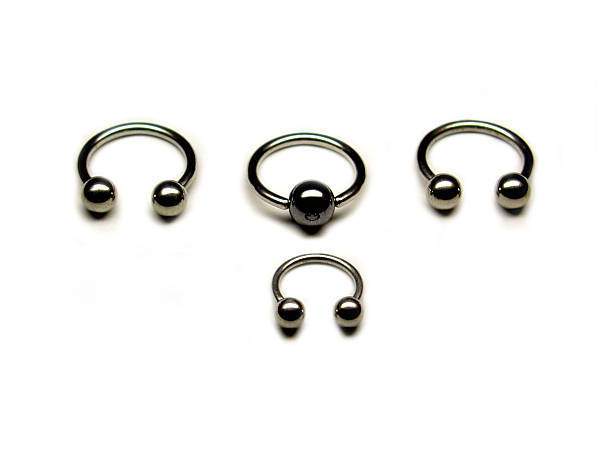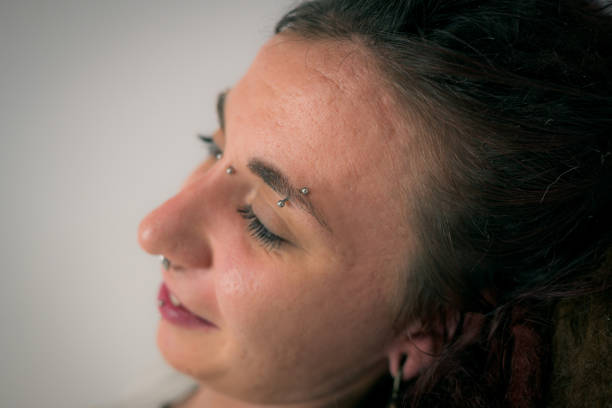Septum piercings have surged in popularity, becoming a sought-after style for those looking to make a statement with their body art. But as with any piercing, the question of cost is paramount. “How Much Do Septum Piercings Cost?” is more than just a question of price tags—it’s a question that encompasses the quality of craftsmanship, the safety of the procedure, and the value of the adornment you choose to wear.
In this article, we offer a detailed examination of the factors that determine the cost of getting a septum piercing. Our expertise is drawn from a wide array of sources including piercing professionals, industry pricing standards, and firsthand accounts. We have thoroughly researched what you should expect to pay, and why, when you decide to take the plunge into the world of septum piercings.
The value of this content lies in its ability to guide you through the often opaque world of piercing prices. We demystify the costs associated with the procedure itself, the aftercare required, and the variety of jewelry options available to you. Our aim is to arm you with knowledge so that you can make informed decisions when considering this distinctive form of self-expression.
Our exploration into septum piercing costs will pique your curiosity by uncovering hidden costs you may not have considered, the reasoning behind the pricing differences from one studio to another, and how the material and design of jewelry can affect the overall price. We also delve into health and safety standards, which are crucial components of the piercing process that often influence cost.
Prepare to dive into a comprehensive guide that promises not just to answer your initial question, but to educate you on the art and science of septum piercings. Whether you are a piercing aficionado or a newcomer ready to embark on your first piercing adventure, this article will provide you with a clear roadmap of costs and considerations, ensuring that when you decide to get a septum piercing, there are no surprises—only the excitement of adding a new facet to your personal style.
Contents
Considering a Septum Piercing? What You Need to Know

Anatomy Suitability
The thickness of your nasal septum plays a big role in septum piercing suitability and placement. Piercers will assess septum thickness and shape during consultations to determine the best piercing location. Thinner septums provide more room for piercings, while thicker septums limit options. Trying to force a piercing through an unsuitable septum area can lead to excessive pain, swelling, and improper healing. Always consult a professional piercer first about whether your nasal anatomy can support a properly placed septum piercing.
Age Restrictions
Septum piercings are subject to the same age restrictions as other body piercings, which vary based on local laws. Some areas restrict septum or other facial piercings on minors under 18 years old without parental consent. Consult your local laws regarding age limitations or any mandated parental permission requirements for body piercings.
Lifestyle Considerations
Septum piercings involve lifestyle changes as you adjust during the initial healing phase. Sports like wrestling or boxing may increase risks of impact that can aggravate new piercings. Wearing glasses regularly can also complicate healing if the frames frequently press on the piercing site. Discuss your daily activities with your piercer for tips to minimize irritation during the first few months. They can recommend specialty jewelry shapes or provide guidance on temporarily avoiding certain activities that may obstruct healing.
Aftercare Commitment
Like any piercing, septum piercings require diligent aftercare and cleaning while healing. This means closely following your piercer’s instructions, usually involving regular saline solution soaks and keeping hands away from the piercing. Skipping aftercare can lead to painful infections or permanent damage, so only get a septum if you can commit to proper maintenance. Consider if you’ll be able to fully comply with aftercare instructions before getting pierced.
Alternatives
If you like the look of septum piercings but want something easier or less visible for work or other obligations, discuss options like nostril or vertical philtrum piercings. Your piercer can walk through pros and cons of similar styles to find the right fit based on your anatomy, healing concerns, and lifestyle needs. Don’t rush into a septum piercing just because it’s trendy – make sure you pick the right piercing for your unique situation.
Septum Piercing Costs: What to Expect
Price Range
Like other piercings, septum piercing costs vary based on factors like geographic location and individual piercer rates. However, septums generally range from $40 to $100 including basic jewelry. More complex or specialized jewelry, or piercers with higher demand, may charge more. Confirm exact pricing with your chosen piercer before your appointment.
Factors Affecting Price
Geographic location plays a big role in septum piercing costs. Those in areas with a higher cost of living and more competition among piercers will fall on the higher end of the price spectrum. Well-known or experienced piercers can also command higher rates compared to new piercers establishing their business. Opt for someone with an excellent reputation for safety and results rather than chasing low prices.
Jewelry options also impact cost. Basic steel barbells or rings are often included in the baseline piercing fee. Opting for more elaborate gold, gemstone, or alternative material jewelry will add cost. Make sure to budget appropriately for your preferred jewelry style.
Septum Jewelry: Material, Style and Size Options
Septum piercings allow for diverse jewelry choices once healed. Consider these factors when selecting your jewelry.
Materials
Surgical steel or titanium are common starter jewelry materials, chosen for their non-reactive properties during initial healing. Once healed, you can branch out into options like:
- Niobium or gold for sensitive skin
- Gold or gems for luxury looks
- Bioplast or glass for organic styles
Always choose implant-grade materials rated for prolonged skin contact. Confirm any metal allergies with your piercer too.
Style and Shapes
Barbells and horseshoe-shaped rings are common starter jewelry for their secure, adjustable fit during swelling and healing. Once healed, explore options like:
- CBBs or circular barbells for a rounded look
- Captive bead rings for an edgy style
- Dangling pendants or chains for added flair
Discuss sizing,Movement and ideal shapes for your anatomy with an experienced piercer.
Gauge and Diameter
Septum gauges usually range from 14g to 18g, with 16g being a popular standard size. Larger gauges allow for more elaborate jewelry, while smaller gauges provide a more discreet look. Your piercer will recommend gauge and diameter pairings to suit your anatomy and style preferences.
More watching video: How to Pierce Your Septum
Getting Your Septum Pierced: The Process
Choosing a Reputable Piercer
Always select an experienced piercer with pristine hygiene standards and a portfolio of well-executed septum piercings. Check reviews and licensing. Avoid pop-up shops or piercers without specialized training. The APP (Association of Professional Piercers) lists members who adhere to high standards – start your search there.
Importance of Proper Sterilization
Reputable piercers will uphold rigorous sterilization and hygiene protocols, including use of an autoclave to fully sterilize equipment and jewelry. Ensure tools are unwrapped in front of you and disposed after use. Avoid piercers who take shortcuts on sanitization.
What to Expect During the Appointment
The piercer will have you lie down and relax during the quick procedure. They mark the sweet spot entrance and exit points with a surgical pen. Once your septum is sufficiently numbed with anesthetic spray, they insert the needle through the marked points in one swift pass. Jewelry insertion follows. The process takes only a few minutes in an experienced piercer’s hands.
Pain Level
Pain is subjective and varies for each person. Many report minimal or brief stinging sensation during the needle pass, while others may experience more intense pinch. Having an experienced piercer, proper anesthesia, and good placement helps minimize discomfort. Over-the-counter pain relievers before your appointment can also help ease any resulting soreness.
Healing Your New Septum Piercing
Healing Timeframe
With proper aftercare, septum piercings generally finish healing within 4-6 months. The piercing may seem mostly recovered after just 6-8 weeks, but complete healing takes much longer. Be patient during the process and avoid changing jewelry too soon.
Aftercare Routine
Follow your piercer’s specific aftercare instructions closely. This usually involves cleaning the piercing 2-3 times per day by submerging or spraying the area with pre-made saline solution. Rinse away crust buildup with water during showers. Avoid touching, turning or otherwise disturbing the jewelry. See your piercer with any concerns about irritation, discharge or other symptoms.
Oral Hygiene
Practice good oral hygiene while healing your septum. Rinse your mouth after meals and avoid excessive crust formation to keep the area clean.
Consulting Your Piercer
Schedule check-ins with your original piercer during healing for professional advice on aftercare, changing jewelry once healed, and identifying any problems needing intervention. Never take a “wait and see” approach to any unusual pain, swelling or changes.
Potential Side Effects and Risks

While rare with proper placement and care, be aware of potential septum piercing risks like:
Infection
Signs include unusual discharge, swelling, redness and pain. Seek medical treatment immediately to avoid complication or permanent damage.
Allergic Reactions
Some may react to certain jewelry materials. Revert to implant-grade options if irritation persists despite proper aftercare.
Migration or Misplacement
Poor placement can cause the piercing to migrate or heal at an odd angle over time. Have your piercer assess any positioning concerns.
Scarring
Scar tissue may form without careful cleaning and jewelry movement. Minimize this risk with regular saline soaks and check-ups. Scar tissue removal may require minor procedures if already formed.
The Takeaway: Is a Septum Piercing Right For You?
Septum piercings allow for diverse jewelry options and individual style when done properly. Make sure to seriously consider the commitment involved. Select an exceptional piercer, follow aftercare diligently, and be patient during the healing process. If you can check all those boxes, a septum just might be your perfect new look.
For those desiring a more discreet option, talk to your piercer about alternatives like nostril piercings. And always remember, never try to force a piercing that your anatomy doesn’t support – a successful septum piercing requires an adequately proportioned sweet spot. Consult the experts and let your unique structure guide your decision.

Trayce served as a grassroots leader and activist in Texas as President of Dallas and Texas Eagle Forum.
Trayce is Mom Caucus Member, Texas Conservative Mamas, Texas Conservative Grassroots Coalition Leader, and Grassroots America Champion of Freedom Honoree.
She currently serves as the Eagle Forum National Issues Chair on Human Trafficking.
Trayce received a Bachelor’s Degree in Marketing from Texas A&M
Currently, she homeschools her youngest child age 13 and graduated her six oldest children, ages 31 to 19.







